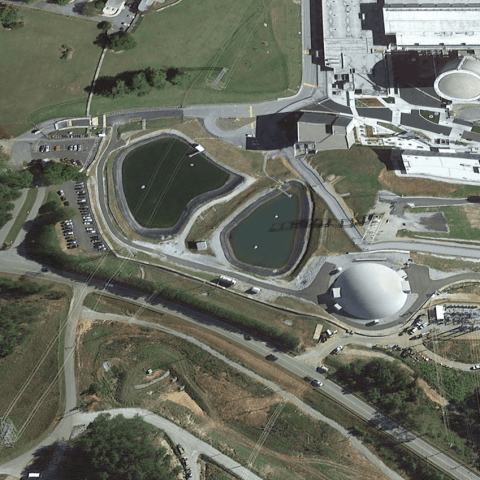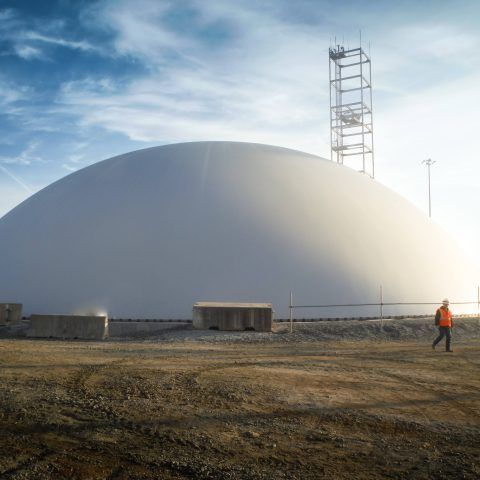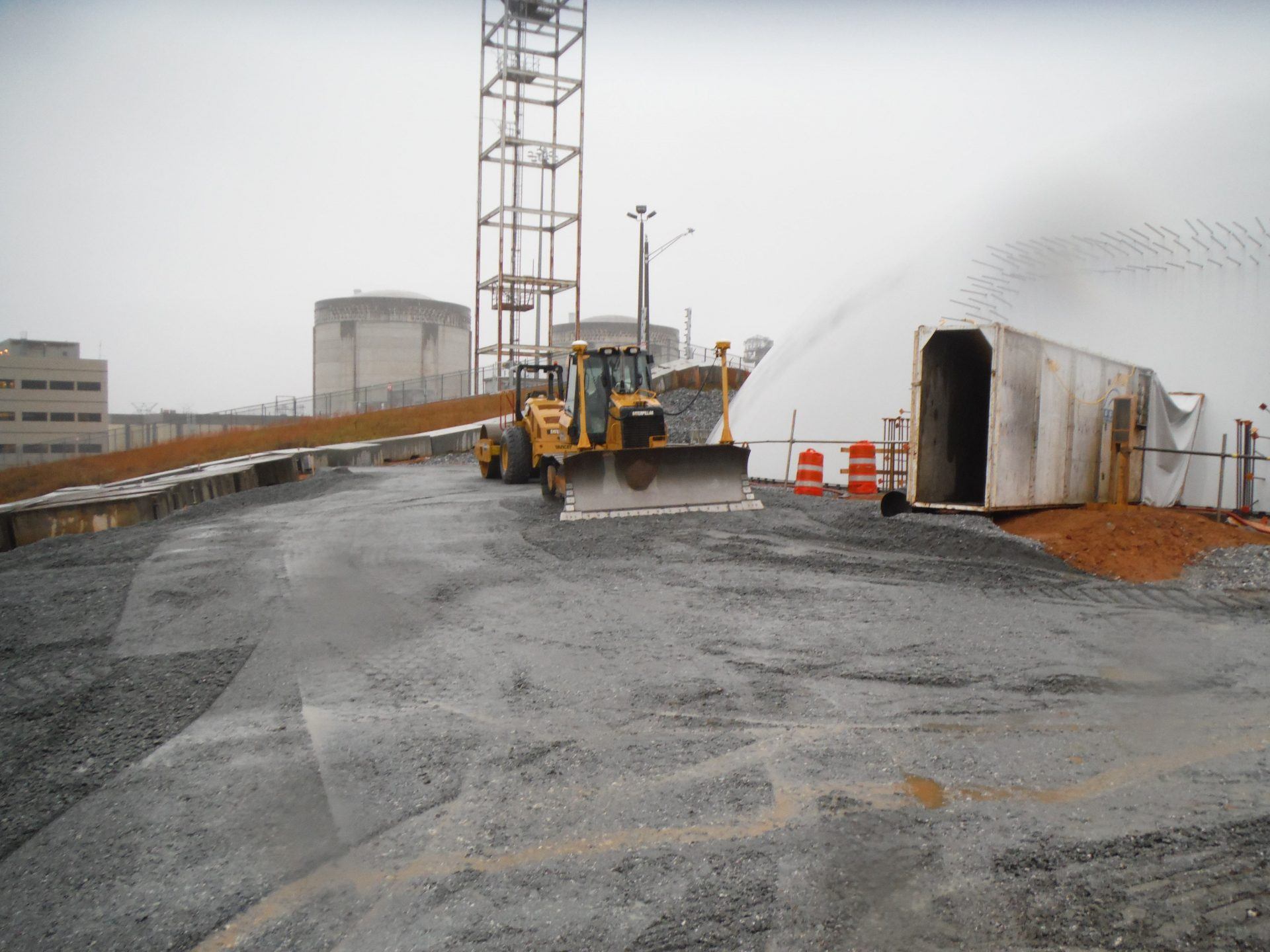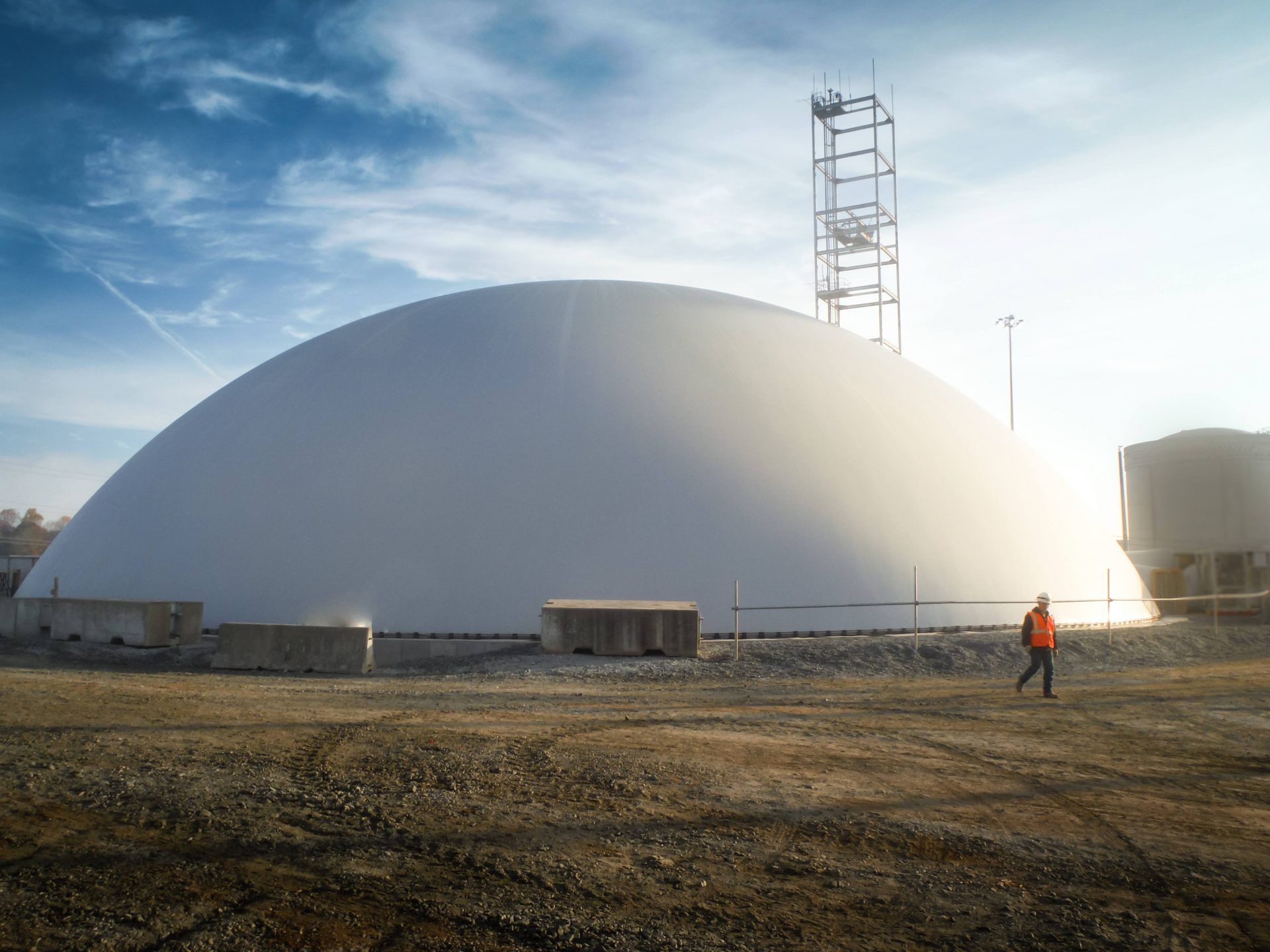Scope of Work
| Domes | Height | Diameter | |
|---|---|---|---|
| Notes:24" Thick Dome Shell | |||
| #601 | 43ft | 144ft | |
| #601 | 13.1m | 43.9m | |
In 2015 Dome Technology completed construction of a dome for electric-power provider Duke Energy in Seneca, South Carolina, located on the same property as the company’s Oconee power plant as a place to store backup equipment in case of emergency.
“The equipment and material needed in an event is stored—all or most of it—in this one location. The dome itself is on the highest point of the site and a very strong building, so we feel it can withstand just about any disaster coming,” said Duke Energy implementation manager for Oconee major projects David Galloway. “The structure is working out great.”
After the 2011 earthquake and resulting nuclear disaster at Fukushima, Japan, the Nuclear Regulatory Commission instituted new recommendations requiring United States power operators to provide means ensuring that plants can withstand natural disasters. Today, nuclear sites around the country are seeking secure storage facilities like domes for housing backup generators and equipment.
Dome Technology has built four such domes for Duke Energy with three in South Carolina and one in North Carolina. According to Galloway, the Oconee dome stores emergency-response equipment, pumps, hoses, generators, tractors, and a truck for transporting equipment. Because the dome is a self-supporting freespan, the column-free interior allows flexibility in storage and utilization of the entire space.
A dome is ideal for storing backup equipment based on the brute strength of reinforced concrete and its geometry. Each dome shell is thick, consisting of polyurethane foam insulation, steel reinforcing, and concrete. Domes are also seismic tolerant, and the shell’s geometry provides stability and load-absorption characteristics. Because the dome is round, an impact force is evenly spread around the shell, rather than being channeled to weaker spots such as sharp corners prone to stress concentration.
“Domes are engineered to withstand basically any natural disasters that could happen,” said Dome Technology project manager Jason Craig.





